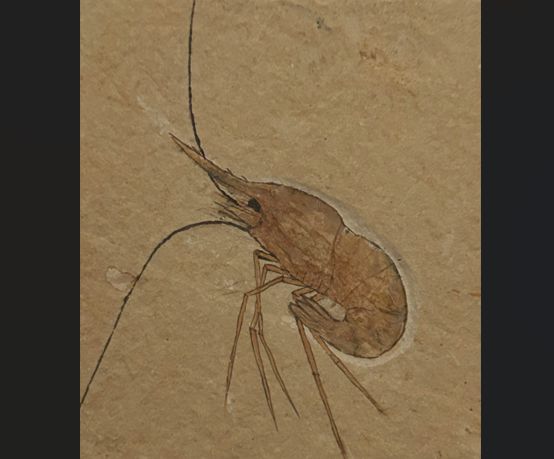When the theory of evolution was put forth by Alfred Wallace and Charles Darwin in 1859, biological science was in its embryonic stage. Naturalists (the precursors of biologists) had been content with simply describing and classifying species (to be sure, an important endeavor in itself). It was not until 1831, for example, that Robert Brown discovered the cell nucleus. In 1837, Schwann and Schleiden realized that the cell was the basic unit of life, and in 1855, Rudolph Virchow established the fact that cells within an organism’s body formed through cell division. In 1865, Schweigger-Seldel and LaVallette St. George showed that spermatozoa were cells.
[A]lthough the classical Darwinian-Wallace theory of evolution was crucial in its day … unmodified, it is no longer viable.
The theory is simplicity itself. Because of constraints in the environment (food, mates, prey/predator), any one physical attribute that gives an organism an advantage over its conspecifics will enable it to survive, prosper, and have more offspring. Those not so lucky will die out. Eventually, the offspring will in turn be different from each other to some degree, and whichever one has an additional trait that gives it an advantage over its peers will thrive. This accumulation of traits continues until the result is a new species.
The process is called Natural Selection.
Evolution is incremental.
Anyone can read the writings of Wallace or Darwin (I encourage the reader to do so); they are enjoyable and devoid of the present-day jargon which makes much of scientific writing incomprehensible to those not in the same discipline, which is why anyone can — and does — comment on the theory of evolution, as opposed to who can debate physicists’ various theories on plasma. Likewise, debate can take place in any medium rather than in an esoteric journal; the arguments, with some variations, are repetitious.
Darwin delayed publication because he was painfully aware there were holes in the theory; he was collating data and waiting for other scientists to make discoveries relevant to the theory. Because of these gaps, the theory was considered to be pseudoscience by scientists for several decades, finally becoming respectable with the rediscovery of Mendel’s experiment, which closed major gaps. The other reason for it being judged pseudoscientific was because of the patently ridiculous claims made by adherents of “Darwinism” (e.g., the reason flamingos became pink was because predators were confused during dawn and sunset).
The Current Debate
Talk of evolution often degenerates into two camps: the Creationists and the neo-Darwinists. Leaving the former to the side, neo-Darwinists have turned an elegant theory into a fundamentalism that is equivalent to that of the Creationists.’ This would have horrified both Wallace and Darwin. Both were flexible, open-minded scientists of the highest caliber.
If someone states he has doubts over the theory, the neo-Darwinists pour scorn on him. If a person states he believes evolution to be real, Creationists pour scorn on him.
Many Creationists, incidentally, have not read one word of Darwin or Wallace. Their knowledge of the evolution comes second-hand, and is usually distorted as “man was descended from monkeys.”
Many scientists and intelligent laypersons strongly believe in evolution — the evidence for it is simply overwhelming — yet simultaneously feel that something is not … quite … right. The climate is such that any scientific question on the validity of some of the details of the classical theory is met with arrogant condescension and hostility by neo-Darwinists, with the implication — if not outright accusation — that one is a Creationist. I speak from experience.
The resulting climate has been that of rendering any potential scientific debate into an either/or scenario: either one believes in Darwinian fundamentalism in toto, or one is a Creationist. This is due to a fallacy I call a False Dichotomy, that if something is not one thing, then it must be the other. In science we have: if the dinosaurs did not die out because of a meteor impact, they must have died from volcanic eruptions; IQ and personality are due to nature or nurture; animal behavior is learned, or instinctual; light is made up of waves, or particles.
Evolution Is a Fact, Darwinism Is a Theory
A major factor in muddying up the waters is a semantic one. The theory of evolution is a theory, contrary to what neo-Darwinists insist. However, evolution itself is not a theory, contrary to what Creationists insist. Evolution is a fact, supported by mountains of evidence. The Darwin-Wallace theory of evolution simply puts forth the mechanism by which evolution occurs, which is Natural Selection.
It is this lack of differentiation between the concept of evolution and the mechanism of evolution that has resulted in some confusion. Aside from the Creationists, otherwise intelligent individuals will at times state that they do not believe in the theory of evolution—and please note that the word “believe” is widely used by everyone, from neo-Darwinists to rational scientists to the Creationists, when referring to the theory. One does not state that one “believes” that mice are mammals, or atoms have electrons, one knows so. Any layperson who disagrees with any other scientific topic can be pointed to the data, and that is it, end of argument.
I know evolution is a fact.
Not so with Natural Selection. True, we can easily point to the genetic and taxonomic lineage of mammals, birds, and humans as evidence of evolution at work over eons. But we cannot point to evidence of Natural Selection as being the active mechanism for these evolutionary developments, either in the field or in the laboratory. Indeed, the most celebrated neo-Darwinist today, Richard Dawkins, has published numerous books devoid of any replicable, incontrovertible, experimental evidence that supports Natural Selection as the mechanism behind evolution; at best, he has conjured up squiggles made by his computer, which he points to as proof.
If we ask the neo-Darwinist for evidence of speciation that we can see, he will sigh and respond with condescension that the evolutionary process is one that takes millennia, if not millions of years (the precise time is never given). Then, he will turn around and inform one of field studies that point to evolution taking place faster than suspected, wherein the environment was either manipulated or changed of its own accord and a particular organism’s morphology became altered by a fraction of a centimeter, in five years or so, as a response to that environmental alteration, so that a bird’s beak changed, or a fin became larger, etc., and this proves that evolution is taking place all the time.
Actually, it does not.
The fact of the matter is that the organism remains the same species. There are certain parameters within which a species will change, but it will still remain that species. A dog is a dog, whether as a Doberman or a Chihuahua, and no degree of selective breeding or centuries of Natural Selection will turn that dog into a non-dog. Simply put, one cannot change a dog into a badger, a cat, or a ferret. There are certain parameters within which morphological changes may occur due to the environment, but the organism will remain the same species.
Another shortcoming of the classical theory is that, according to the classical theory, evolution is, by definition, an ongoing, never-ending process. Why, then, do we see living fossils, unchanged, after millions of years? From the exotic coelacanth to the mundane horseshoe crab to starfish, to the Voltinia butterfly to sea urchins, to sand dollars, to shrimp, to cockroaches (to mention just a few) all of these organisms should be unrecognizable, unknown today because they should have changed, they should have evolved. Yet, here they are!

Shrimp are one of a number of species that have kept their basic form over millions of years. (Photo: Armando Simon)
If an organism does not evolve after a century, or a thousand years, or ten thousand years, or a million years, just when is it supposed to evolve? And if evolution does not take place after ten million (sand dollar), twenty million (Voltinia butterfly), fifty million (purple frog), one hundred million (coelacanth), one hundred and fifty million (Chimaera fish), two hundred million years (Bangia algae, brittle starfish, sea urchin), then when, exactly, is it supposed to take place? After all, there is a finite number of millions of years before we enter the era when the molten Earth was formed.
Furthermore, please note that, by definition, if speciation through Natural Selection occurs due to the morphological differences between members of a particular species, the only way that evolution/speciation would cease would be if all the members of a particular species were clones.
Punctuated equilibrium (which was originally attacked by neo-Darwinists, but has been empirically confirmed) asserts that the fossil record shows speciation abruptly occurs at certain points, whereupon no further evolution (stasis) takes place within those species for millions of years. Its authors insisted that they were buttressing the theory, not tearing it down. Darwin had delayed publication in the hopes that the fossil record would turn up “missing links.” Yet, the gradual transformation of one species into another has not been found.
As can be seen, the classical theory fails to explain, or is contradicted by, certain undeniable facts. Data is data. There is no conclusive, incontrovertible, replicable evidence that speciation is caused by Natural Selection.
Having said that, evolution is a fact, backed by data. A simple illustration will suffice. A human, a dog, an elephant and a rat: they are almost identical. That is, they have four legs, not six, not eight. They are cylindrical. They have one heart, not two. They have blood. They breathe oxygen. They have a stomach. They have lungs. The ribs do not extend to the abdomen. Yes, they vary in overall size, or size of certain parts of their bodies, but what is paramount is that their physiology is almost identical. This is why rats and monkeys are used for medical and psychological research, and why drugs are first tested on them.
Scientific Critiques of the Classical Theory
Other scientists have critiqued Natural Selection and have offered alternatives. D’Arcy Thompson was one, author of the mammoth On Growth and Form.
Symbiogenesis is a theory reintroduced in the West by Lynn Margulis and Dorion Sagan in Acquiring Genomes and in Microcosmos, based heavily on the work of Russian scientists carried out in the late 1800s and early 1900s. They criticized the classical overemphasis of random mutation for speciation and pointed to the experimental evidence that 99.9 percent of mutations are deleterious, if not fatal. In contrast, they hypothesized that the primary source of inherited variation-evolution is both symbiosis and the acquisition of new genomes from other species. “Intraspecific variation never seems to lead, by itself, to new species.”
Richard Goldschmidt was a geneticist who described the morphological differences (some of which were substantial) between members of a wide-ranging species as a result of adaptation to local conditions (i.e., through Natural Selection); this he referred to as Microevolution, but he went against orthodoxy when he stated that there was no way that these subspecies could ultimately evolve into new species through Natural Selection — there was “a bridgeless gap.” Rather, large-scale changes could create new species (Macroevolution) by (a) rearrangements of the chromosomal structure through inversions and translocations and (b) mutations of developmental genes, which would result in “hopeful monsters.” Another German scientist, Otto Schindewolf, a paleontologist who did exhaustive research on ammonites and corals, came to similar conclusions and is worth quoting him at length on this point:
According to Darwin’s theory, evolution takes place exclusively by way of slow, continuous formation and modification of species: the progressive addition of ever newer differences at the species level results in increasing divergence and leads to the formation of general, families, and higher taxonomic and phylogenetic units.
Our experience, gained from the observation of fossil material, directly contradicts this interpretation. We have found that the organizing structure of a family or an order did not arise as the result of continuous modification in a long chain of species, but rather by means of a sudden, discontinuous direct refashioning of the type complex from family to family, from order to order, from class to class. The characters that account for the distinctions among species are completely different from those that distinguish one type from another.
Because of the paleontological evidence, it is now generally accepted that evolution is not a gradual process. Rather, speciation occurs abruptly. Simultaneous with the extinction of previous forms.
It is fascinating that Nobel Prize winner Barbara McClintock, on several occasions, wrote about the evolutionary implications of her work, and the significance simply went unnoticed. For example, her Nobel lecture in 1984:
The examples chosen illustrate the importance of stress in instigating genome modification by mobilizing available cell mechanisms that can restructure genomes, and in quite different ways. A few illustrations from nature are included because they support the conclusion that stress, and the genome’s reaction to it, may underlie many species formations.
Enter impacts by meteors and comets. It must be remembered that Earth is a gargantuan ball of churning, molten matter overlaid by an ultrathin eggshell of a crust. Depending on speed, size, and angle of trajectory, an asteroid or comet impacting Earth can either shatter the crust and let loose hell, creating a toxic worldwide environment. Or it may not, and the damage is localized. Or, in the case of multiple simultaneous impacts, do both.
These occurrences in the past not only have caused the mass extinctions, but they have simultaneously been the primary cause of speciation by fomenting such a noxious upheaval in the planetary environment that organisms’ genomes will have become rearranged, from the Avalon Explosion to the last Ice Age. This is through what I call the McClintock Effect. The paleontological record shows that rapid speciation occurs right after a mass extinction, and that gargantuan basaltic traps are missing during periods lacking mass extinction. In short, evolution is imposed upon embryonic organisms. Evolution is not endogenous, it is exogenous.
In conclusion, although the classical Darwinian-Wallace theory of evolution was crucial in its day and fertile for science, it is evident by now that, unmodified, it is no longer viable. It was the best theory that could be formulated for that time, and it says much for Darwin that he himself acknowledged at times the conundrums and the loose ends that his theory had.
This is not a rejection of the classical theory, rather the theory is in need of modification, just as it was modified upon the rediscovery of Mendel’s experiment. Hopefully, the stagnation in the field will finally end once and for all; the neo-Darwinists have arrested the development of science for too long now. Towards this end, we are reminded of what Max Planck once stated, and Isaac Asimov later wittily paraphrased, that science advances one funeral at a time.
Armando Simón is a retired psychologist and historian, the author of When Evolution Stops.
READ MORE from Armando Simón:
Trump Will Force a Compromise on Ukraine
Transgender ‘Care’ in North America: The Island of Dr. Moreau


![NYC Tourist Helicopter Falls into Hudson River, Siemens Executive and Family Among Those Killed [WATCH]](https://www.right2024.com/wp-content/uploads/2025/04/NYC-Tourist-Helicopter-Falls-into-Hudson-River-Siemens-Executive-and-350x250.jpg)






![Green Day’s Cringe Trump Diss Ends in Fire and Evacuation [WATCH]](https://www.right2024.com/wp-content/uploads/2025/04/Green-Days-Cringe-Trump-Diss-Ends-in-Fire-and-Evacuation-350x250.jpg)
![Red Sox Fan Makes the ‘Catch of the Day’ with Unconventional ‘Glove’ [WATCH]](https://www.right2024.com/wp-content/uploads/2025/04/Red-Sox-Fan-Makes-the-‘Catch-of-the-Day-with-350x250.jpg)
![Bikini Clad Spring Breakers Prove Our Education System is Failing Students [WATCH]](https://www.right2024.com/wp-content/uploads/2025/03/Bikini-Clad-Spring-Breakers-Prove-Our-Education-System-is-Failing-350x250.jpg)





